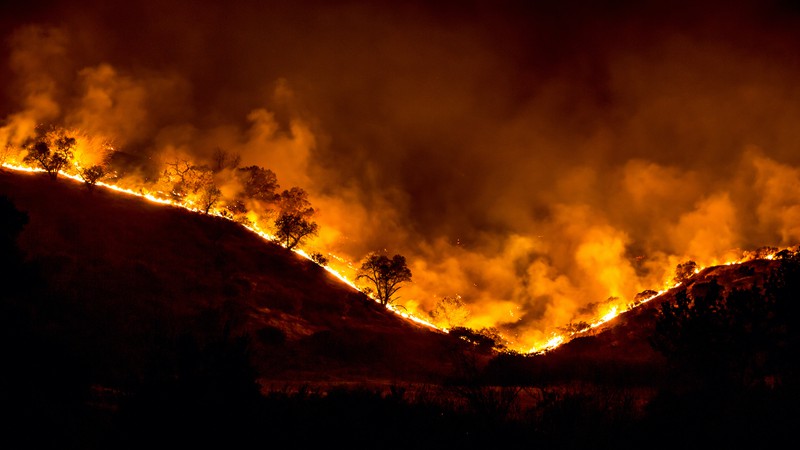
California homeowners are fighting to get back cancelled fire insurance policies. Peter Buschmann, U.S.Forest Service / Wikimedia Commons Public Domain
After insurance companies cut off coverage for more than 230,000 California homeowners after the 2019 fire season in which 259,823 acres and 732 structures burned—which the state agency Cal Fire described as a “relatively mild” year—homeowners took new measures to fireproof their homes and property. But those efforts have not moved the big insurers to give them back their policies, according to reporting by Kate Selig in the Mercury News.
Even homeowners who were allowed to keep their policies often face newly exorbitant rates, pricing them out of the insurance market in the aftermath of a devastating series of wildfires over the past few years. Insurers have footed bills totaling about $30 billion over the three most recent fire seasons. Since 2015 insurers have booted more than 950,000 California homeowners off their plans.
Rural counties, obviously the most susceptible to fire, have been hit hardest, with the 10 most fire-prone counties—northern counties such as Nevada, El Dorado, Trinity and Amador—absorbing a 203 percent rise in non-renewed policies after 2019, according to a CalMatters report.
The fire insurance crisis became so acute that at the end of 2019, California Insurance Commissioner Ricardo Lara—invoking a law that he himself had written as a state senator a year earlier—imposed a one-year moratorium on new dropped policies. But that moratorium expired last December.
Now, according to Selig’s reporting, insurance companies will not even reinstate policies for homeowners who have shelled out thousands of dollars in their own cash to reduce the risk of fire damage, a costly and labor-intensive process known as “fire hardening.” Those measures range from clearing thousands of feet of potentially flammable brush, to installing rooftop sprinkler systems and metal screens over vents to block any flying embers.
The problem is that insurance companies have not figured out how to put a price tag on such hardening measures. While experts agree that hardening reduces the risk of fire damage—and therefore the risk carried by insurers—they can’t agree on how much. There is simply no consensus on how much any specific measure reduces risk, Max Moritz, a wildfire expert at University of California Cooperative Extension at the Bren School in Santa Barbara, told Selig.
“There’s a lot that we know is a step in the right direction, but we have very little information to base an actual number on,” Moritz said.
Some insurers are taking tentative steps to figure it out. Eight different companies accounting for 13 percent of the state’s fire insurance market offered at least some discount for homeowners who take the fire mitigation measures, as of May 2021.
But most companies still refuse to reinstate coverage despite any hardening steps a homeowner takes, simply because the research into how much the mitigation efforts are worth simply isn’t there.
Why not? Insurance companies never saw the need to research the cash value of mitigation until the 2017 and 2018 fire seasons, when they started to see massive payouts due to the increasingly out-of-control fires, a dangerous phenomenon that scientists say is the result of climate change. According to a Scientific American report, more than half of all acres burned by wildfire throughout the United States can be attributed to climate change, and in California the number of warm, dry, autumn days—prime fire conditions—has doubled since the 1980s.
And perhaps not surprisingly, consumers may soon pay the price for the fallout of climate change. A recent draft report by the Climate Insurance Working Group—an advisory group for the state insurance commissioner—recommends allowing insurance companies to factor in projections of future climate change into the prices of their policies.
Whether the state will go that route will not be determined at least until the final version of the report comes out later in 2021.
Read the Mercury News report (paywall).
Short articles summarizing reporting by local news sources with linkbacks to the original content.